Collective oscillations: Importance of anisotropy
Alex Friedland, Joe Carlson
Modeling collective oscillations in a supernova is often done in the "single-angle" approximation, which neglects anisotropy of the problem. We have recently discovered that this approximation fails for realistic late-time spectra. The full problem is highly computationally demanding: thousands of energy and angular bins are required implying millions of coupled rays, placing this problem in the supercomputing domain.
Complicated pattern of collective oscillations in energy-angle space
from H. Duan and A. Friedland
Supernova Neutrinos
Collective oscillations: three-flavor effects
In a SN, neutrinos are dense enough to affect each other's flavor evolution. The whole ensemble evolves collectively -- an intrinsically nonlinear phenomenon with many surprises. Neutrino oscillations are usually treated in a 2-flavor framework. For solar, atmospheric, beam, and reactor neutrinos this is justified. In a SN, however, the 2-flavor description breaks down spectacularly as demonstrated in the following figures.

Understanding different physical regimes of collective flavor oscillations
We have recently found that collective oscillations have different physical regimes, depending on the fluxes and spectra of emitted neutrinos. This finding has implications for the design of future detectors at DUSEL (which involves members of LANL's P-division), as well as for the nucleosynthesis calculations, which represents an intersection of several PNAC disciplines. We are collaborating with several institutions on this work: UNM, NCSU, UCSD, and the U. of Minnesota.
Jet Substructure:
Example processes (MSSM but not limited to):
• boosted gluinos, boosted Higgs
• jets + missing energy challenging for discovery: large background Z+jets, W+jets
Isoptropic distributions are difficult to study
Boosted gluinos (e.g. from squark decay) result in "fat jets", a lot of substructure, and planarity signatures. This implies there is a strong potential for discovery.
A boosted provides features like "fat jets" and other substructure:
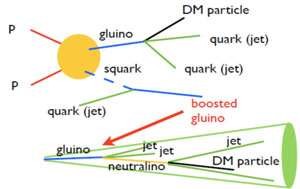
In constrast it is very challenging to analyze "featureless" events:
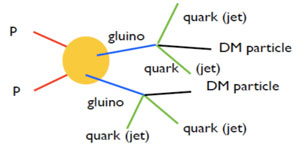
Box spectrum: gluino mass 405 GeV, squark mass 1000 TeV Lowest order production cross-section at 7 TeV COM:
gluino-gluino 3.9 pb, gluino-squark with squark > quark + gluino 0.77 pb
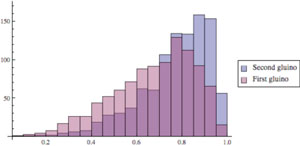
Discovering and Probing New Phsyics at the LHC
Important Questions:
1. How do we demonstrate that a "new physics" discovery is indeed due to new physics and not Standard Model processes?
Post-discovery
2. what is its mass?
3. what are its couplings and interactions?
For 1: using jet substructure to improve discovery potential of new physics (I. Shoemaker) and validate disvoery using tools of effective field theory (G. Ovanesyan) (20110098ER)
For 3: using a charge asymmetry to infer interactions of new matter to quarks and leptons

The High Energy Frontier of Nuclear and Particle Physics
contact Michael Graesser an Ivan Vitev
Significance: Top priority for nuclear (NSAC) and particle phsyics (P5);
important implications for cosmology (direct dark matter detection)
Timeliness: Colliders that push the limits of particle and nculear phsyics and now in operation – pressing need for novel theoretical tools
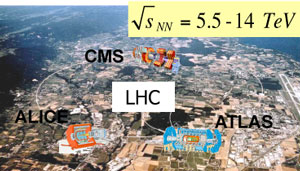
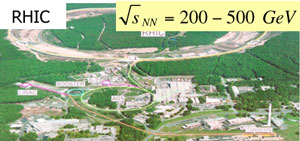
New Physics at the TeV scale:
origin of mass, supersymmetry, extra dimension, dark matter, ...

New Physics at the GeV scale:
new states-of-matter, unexpected properties, new particle interactions in matter, ...